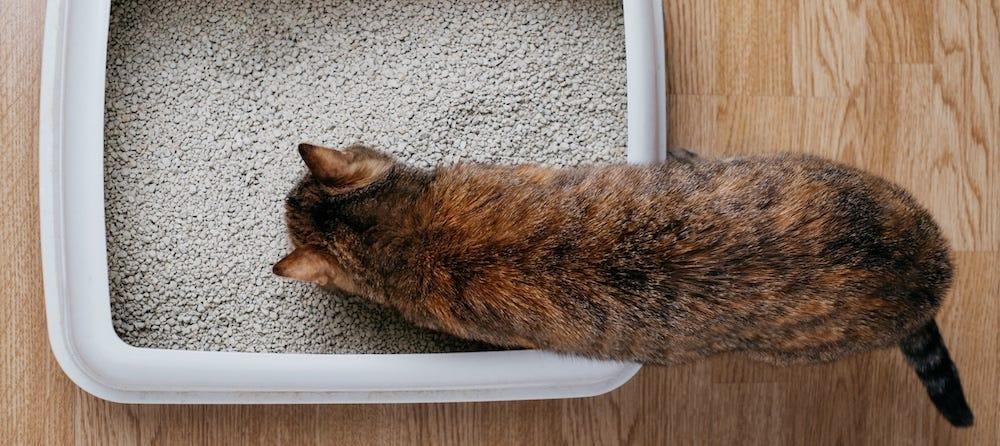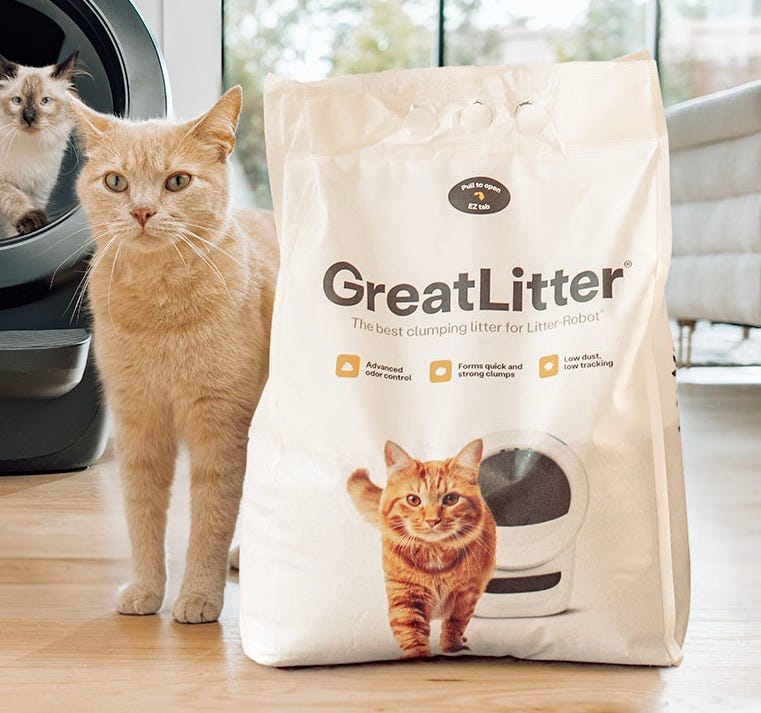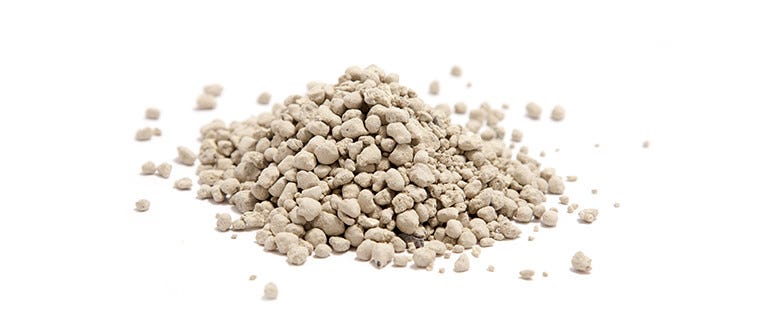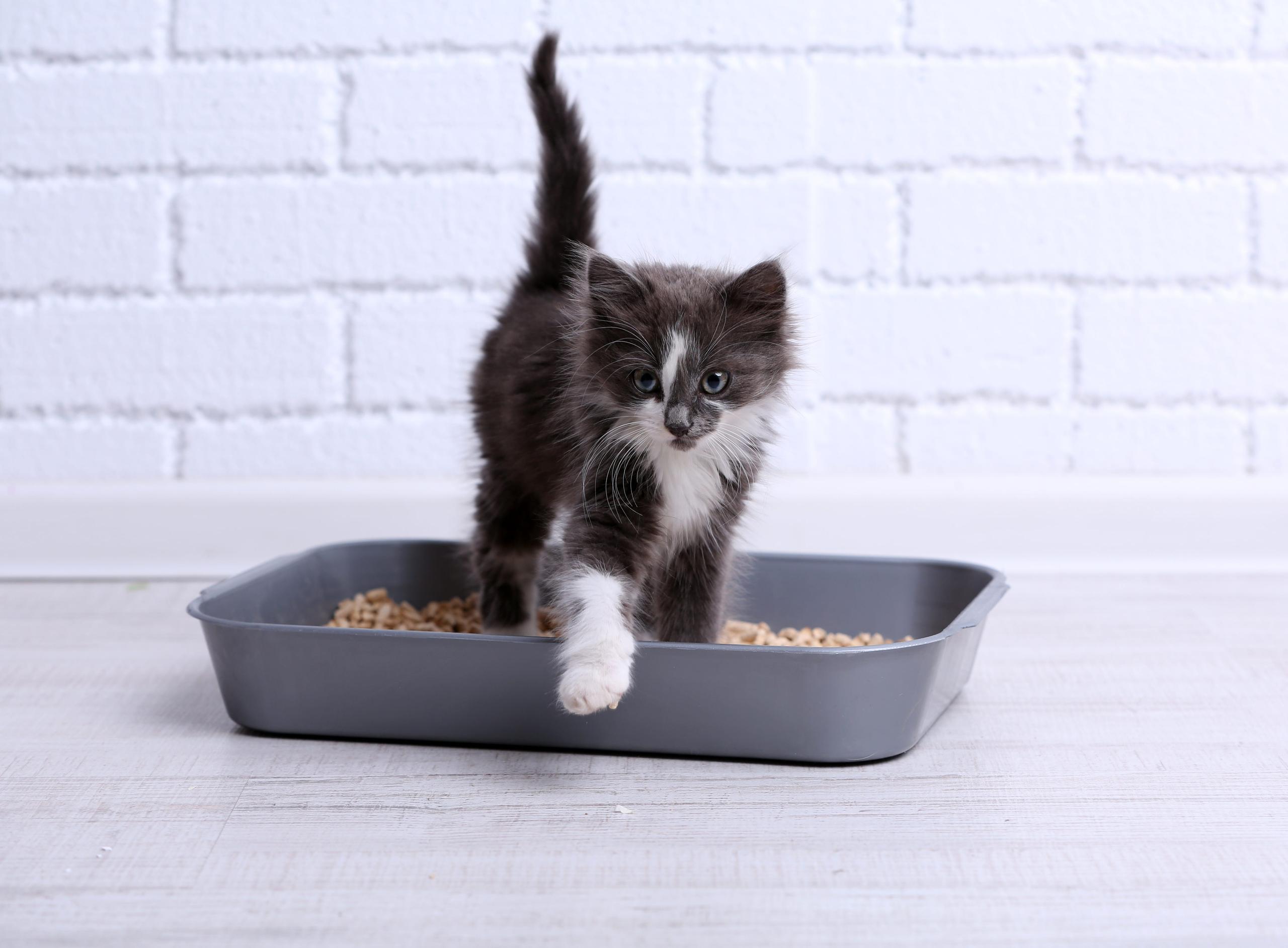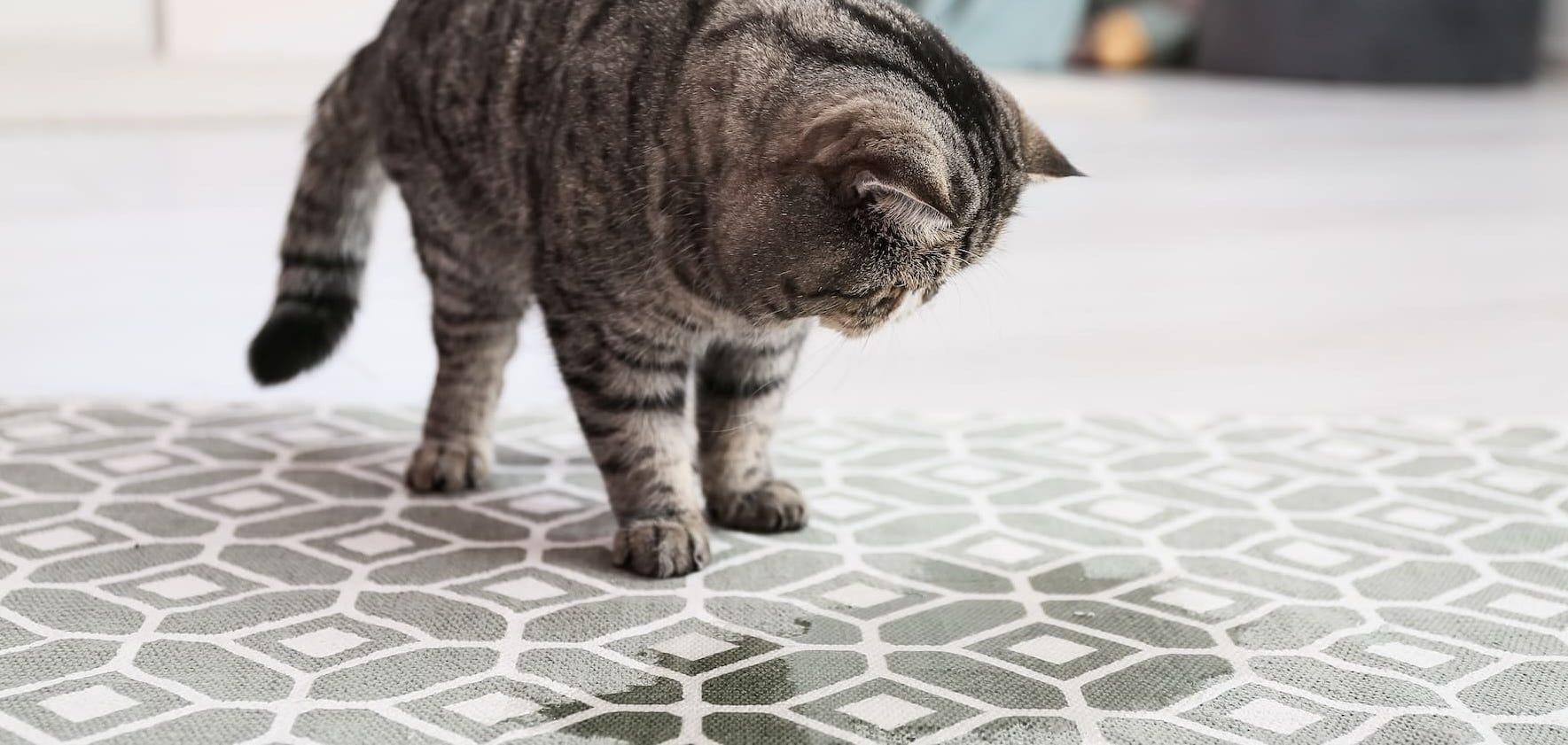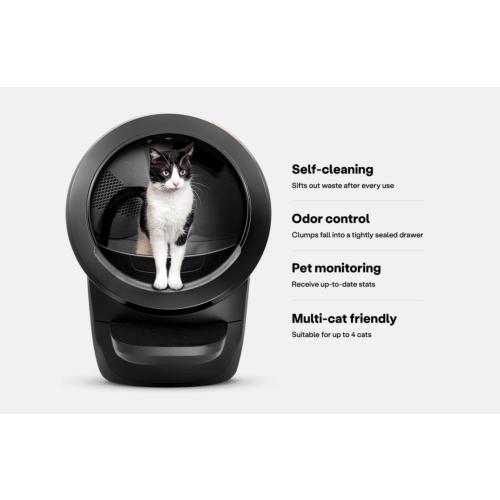Switching your cat’s litter can seem like a simple change, but for your cat, it can be a big deal. Cats are creatures of habit, so introducing a new litter requires a thoughtful approach to make it a smooth transition. Whether you’re switching due to allergies, better odor control, or simply for convenience, this guide will help you understand when and how to make the change while keeping your cat comfortable.
Is it bad to change cat litter brands?
Changing litter brands isn’t inherently bad, but sudden changes can be stressful for your cat. Therefore, you should avoid frequent cat litter changes. Cats rely on scent and texture to recognize their litter box as a safe place to relieve themselves. When you introduce a new type of litter too quickly, it can lead to confusion or even cause your cat to avoid using the box entirely. Gradual transitions are key to helping your cat accept the new litter.
Why switch cat litter?
There are several reasons why you might want to change cat litter:
Allergies
If your cat or anyone in your house has developed allergies, switching to a hypoallergenic or dust-free litter can help lessen allergic reactions and make the environment more comfortable overall.
Your cat pees outside the litter box
Litter box avoidance can sometimes be related to the litter itself. If your cat has started peeing outside the box, switching to a different type of litter may encourage them to use it again.
Better odor control
If your current litter isn’t doing a great job of controlling odors, it’s worth trying a different brand or type with better odor-absorbing properties. This can be especially helpful if you live in a small apartment where smells spread quickly, or if you have multiple cats using the same box. Fast-clumping cat litters will typically have better odor control.
Reducing litter dust
Remember what we said about allergies? Some litters create a lot of dust, which can be irritating to your cat’s respiratory system—and yours. Switching to a low-dust or dust-free litter can improve air quality and reduce litter tracking.
Convenience
Not all litter is created equal in terms of ease of use. Some may require more frequent scooping or produce more mess. Switching to a more convenient option (e.g. better clumping, larger granules, etc.) can save you time and energy in your litter box maintenance routine.
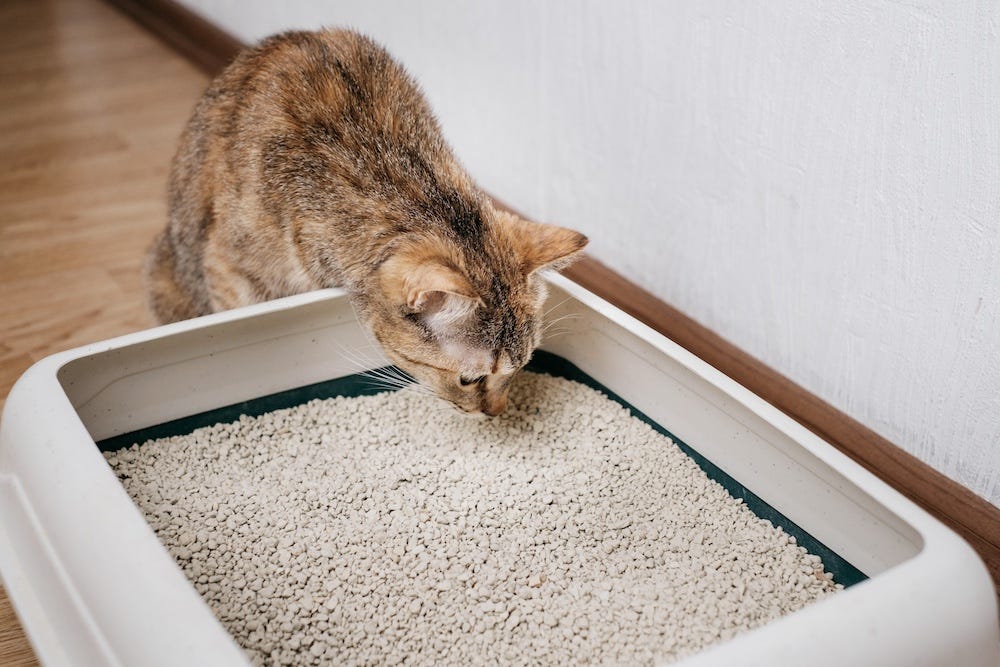
Signs you should switch cat litter
If you notice any of the following signs, it might be time to switch your cat’s litter:
Cat behavior
If your cat is hesitant to use the litter box or is avoiding it altogether, the litter could be the issue. Cats can be picky about the texture and smell of their litter, and they might protest by doing their business outside of the box.
Cat health
Health issues like coughing, sneezing, or itchy skin (usually after using the litter box) can indicate that your cat is reacting to the current litter. Dusty or scented litter can cause respiratory irritation or allergic reactions for some.
Tracking or excessive mess
If your cat is kicking litter out of their box or tracking it through the house when they're done, it might be time to switch to a heavier, low-tracking litter. It might also be a sign that your cat is not a fan of this type of litter. Excessive mess can also make maintaining the litter box more tedious for you.
Strong odors
If you’re noticing strong odors, even with regular scooping (at least once a day), your litter might not be clumping or absorbing waste as effectively as it should. Switching to a litter with better clumping capabilities can help keep odors better under control.
Choosing the right litter
When deciding on a which is the best cat litter for your household, there are some factors to keep in mind:
Material (clay, silica, etc.)
The material of the litter can make a big difference in terms of tracking, dust, and odor control. Common options are clay, silica, and natural alternatives like corn or walnut-based litter. Each has its own pros and cons, so it’s important to choose one that fits both your cat’s preferences and your lifestyle. According to some studies, cats tend to prefer clumping clay litter.
Scented vs unscented
While scented litter can help mask odors, many cats are sensitive to strong smells and may avoid the litter box if the scent is too overwhelming. Unscented litter is generally a safer bet, especially if your cat has a sensitive nose.
Cat litters to avoid
Avoid litters that are overly dusty or strongly scented since they can cause respiratory issues for both you and your cat. It’s also good to steer clear of non-clumping litters if odor control is a priority (especially in multi-cat households) since these can let waste sit longer in the box and lead to stronger smells.
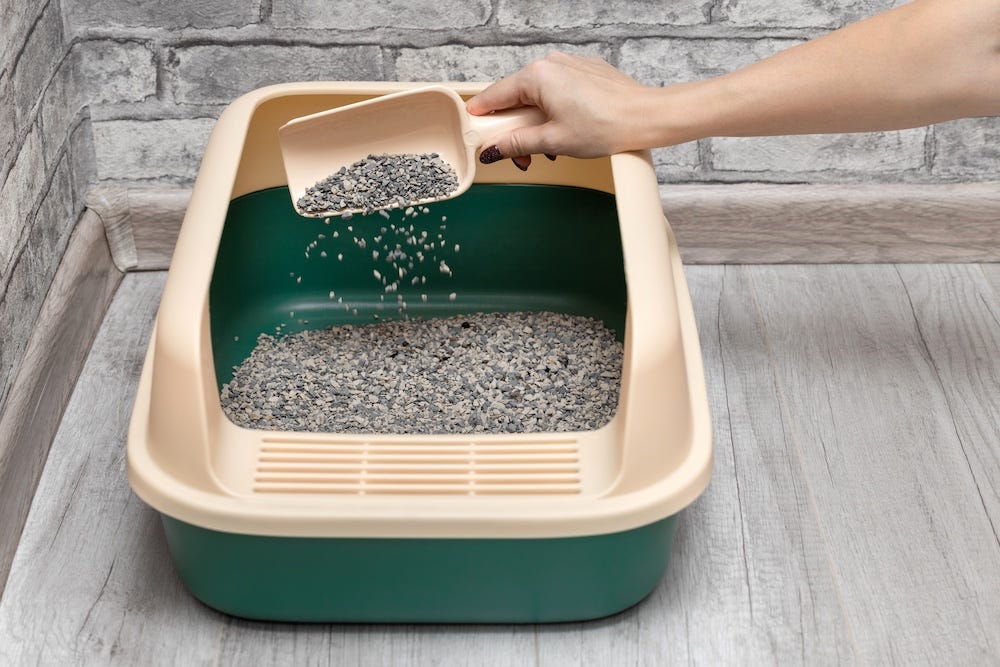
How to switch cat litter and transition your cat easily
When it comes to switching your cat’s litter, patience and a gradual approach are best. Here are some tips to make the transition go smoothly:
1. Mix some of the old litter with the new
Start by mixing a small amount of the new litter into the old one. Over the course of a week or so, gradually increase the proportion of the new litter until you’ve fully transitioned. This helps your cat adjust to the new scent and texture slowly.
2. Use litter attractant
Using a litter attractant can encourage your cat to use the box during transition. These products are designed to entice cats with a scent they naturally respond to, making them more likely to use the new litter.
3. Use multiple litter boxes
If you have the space, set up a second litter box with the new litter. This gives your cat the option to explore the new litter at their own pace while still having access to their familiar box. Once they start using the new box consistently, you can remove the old one or switch them both to the new litter.
4. Keep the litter box clean
Cats are more likely to use a clean litter box, so be sure to scoop the box daily and keep the area around it tidy. A clean box will make the new litter more appealing to your cat.
5. Have patience!
Finally, be patient. Some cats take longer than others to adjust to the change. If your cat seems hesitant or avoids the new litter at first, don’t rush the process. Stick to a gradual transition and give them time to get comfortable. If they really show you they don’t like it, you may need to start over and try again with a different litter choice.
Switching your cat's litter doesn’t have to be stressful for you or them. By making the change slowly and choosing a litter that meets your cat’s needs, you can hopefully keep litter box drama to a minimum. Remember to monitor your cat’s behavior and health during the switch, and don’t hesitate to chat with your cat if you have any questions.
Sources:
- Feline Behavior Problems: House Soiling | Cornell University College of Veterinary Medicine
- Litter Boxes | Indoor Pet Initiative
- The Behavioural Impact on Cats during a Transition from a Clay-Based Litter to a Plant-Based Litter
- [Occupational asthma caused by scented gravel in cat litter boxes] - PubMed
- The Behavioural Effects of Innovative Litter Developed to Attract Cats
- How to help your cat(s) use the litter box
